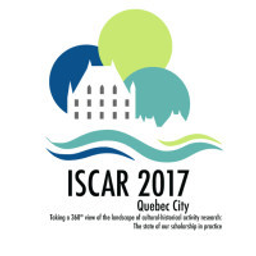Plotting activity in cross-cultural relations
Thème:
3.1 Farther reaches of theoretical and methodological explorations
Quoi:
Paper in a Symposium (Symp)
Quand:
1:54 PM, Mardi 29 Août 2017
(24 minutes)
Où:
Convention Center
- 205 B
Comment:
Extending the premise that language is a symbolic tool for acting in the world (Engestrom et al., 1999; Vygotsky, 1997), this paper discusses the literary convention of “plot” as a scaffold for interacting in human environments. The paper draws on theories that emphasize pragmatic relations in narrative as material means for figuring out what is going on in the world, how one, fits, and what one would like to change (Daiute & Nelson, 1997; Labov & Waletzky, 1997). Plot elements and structure, thus, serve as lenses guiding perception and action. Studying how people with different histories narrate everyday events offers insights about real-time sense-making processes. We bring this theory to life with 60 study-abroad students’ video-logs of “puzzling” intercultural experiences (Surian & Tarchi, 2014). Thirty-two participants from the U.S. studied in Americanized institutes, whereas 28 ERASMUS Mundi students came from different countries and studied among Italians. Plot analyses of the video-log transcripts revealed significant differences in how these groups of students used narrating to interact with Italian culture. ERASMUS students emphasized settings and endings in more detail than the US students. US students included more complicating actions in their narratives, without balancing them with resolution strategies. These differences indicate that one group of students was more sensitive to complexities of the foreign context and how they fit in, while the other group used narratives to notice problems in the foreign culture. The paper explores how plot is not only a mirror into cultural relations but also scaffolds these relations.
